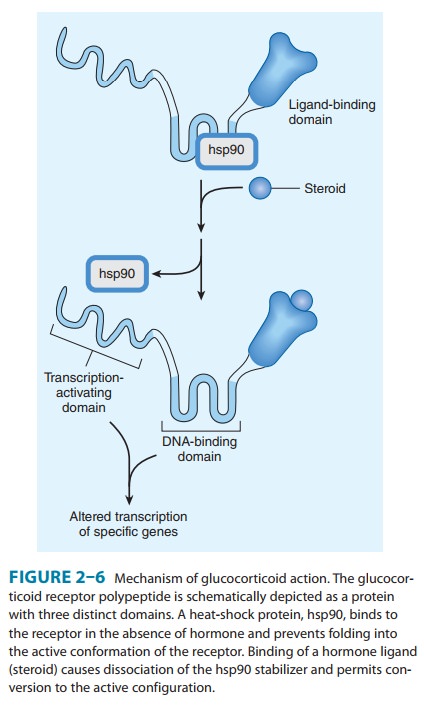Chapter: Basic & Clinical Pharmacology : Drug Receptors & Pharmacodynamics
Intracellular Receptors for Lipid-Soluble Agents
Intracellular Receptors for
Lipid-Soluble Agents
Several
biologic ligands are sufficiently lipid-soluble to cross the plasma membrane
and act on intracellular receptors. One class of such ligands includes steroids
(corticosteroids, mineralocorticoids, sex steroids, vitamin D), and thyroid
hormone, whose receptors stimulate the transcription of genes by binding to
specific DNA sequences near the gene whose expression is to be regulated. Many
of the target DNA sequences (called response
elements) have been identified.These “gene-active” receptors belong to a
protein family that evolved from a common precursor. Dissection of the
receptors by recombinant DNA techniques has provided insights into their
molecular mechanism. For example, binding of glucocorticoid hormone to its
normal receptor protein relieves an inhibitory constraint on the
transcription-stimulating activity of the protein. Figure 2–6 schematically
depicts the molecular mechanism of glucocorticoid action: In the absence of
hormone, the receptor is bound to hsp90, a protein that appears to prevent
normal folding of several structural domains of the receptor. Binding of
hormone to the ligand-binding domain triggers release of hsp90. This allows the
DNA-binding and transcription-activating domains of the receptor to fold into
their functionally active conformations, so that the activated receptor can
initiate transcription of target genes.

The
mechanism used by hormones that act by regulating gene expression has two
therapeutically important consequences:
1.
All of these hormones produce their effects after a characteristic lag period
of 30 minutes to several hours—the time required for the synthesis of new
proteins. This means that the gene-active hormones cannot be expected to alter
a pathologic state within minutes (eg, glucocorticoids will not immediately
relieve the symptoms of acute bronchial asthma).
2.
The effects of these agents can persist for hours or days after the agonist
concentration has been reduced to zero. The persis-tence of effect is primarily
due to the relatively slow turnover of most enzymes and proteins, which can
remain active in cells for hours or days after they have been synthesized.
Consequently, it means that the beneficial (or toxic) effects of a gene-active
hormone usually decrease slowly when administration of the hormone is stopped.
Related Topics